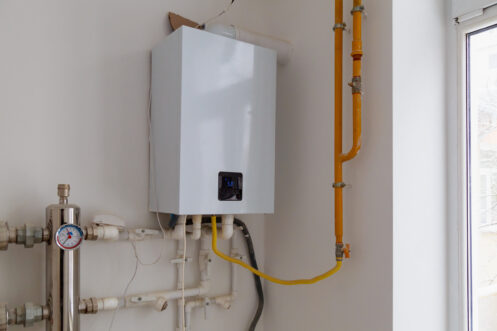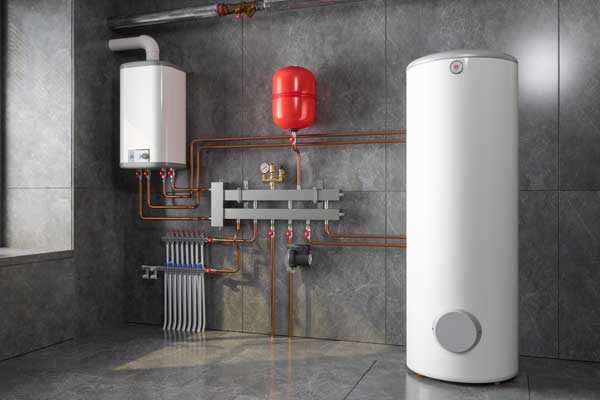Professional Guidance for Maintaining Your Home's Hot Water System
Professional Guidance for Maintaining Your Home's Hot Water System
Blog Article
Listed here in the next paragraphs you might get a lot of extremely good details around How to Maintain a Hot Water Heater in a Few Simple Steps.

Warm water is necessary for day-to-day comfort, whether it's for a rejuvenating shower or washing recipes. To guarantee your hot water system runs effectively and lasts much longer, routine upkeep is vital. This post offers sensible ideas and insights on how to preserve your home's warm water system to avoid disruptions and pricey repair services.
Intro
Maintaining your home's warm water system may seem complicated, but with a few simple actions, you can guarantee it runs smoothly for several years to come. This guide covers whatever from understanding your warm water system to DIY maintenance suggestions and knowing when to contact expert aid.
Relevance of Maintaining Your Warm Water System
Normal upkeep not only expands the life-span of your hot water system however additionally ensures it operates effectively. Overlooking maintenance can result in reduced efficiency, greater power costs, and also early failing of the system.
Indicators Your Hot Water System Requirements Maintenance
Recognizing when your hot water system requires attention can stop major problems. Watch out for indications such as irregular water temperature, odd sounds from the heating system, or rustic water.
Understanding Your Hot Water System
Prior to diving right into maintenance jobs, it's useful to understand the fundamental parts of your warm water system. Normally, this consists of the hot water heater itself, pipes, anode rods, and temperature controls.
Month-to-month Upkeep Tasks
Normal monthly checks can help capture small problems prior to they rise.
Purging the Hot Water Heater
Flushing your water heater gets rid of debris buildup, improving efficiency and extending its life.
Checking and Replacing Anode Rods
Anode poles avoid corrosion inside the container. Inspecting and changing them when worn is vital.
Inspecting and Adjusting Temperature Setups
Readjusting the temperature settings makes sure ideal efficiency and safety and security.
DIY Tips for Maintenance
You can do numerous upkeep tasks on your own to keep your warm water system in leading problem.
Looking for Leakages
Frequently inspect pipes and connections for leakages, as these can cause water damage and greater bills.
Checking Pressure Relief Valves
Checking the pressure safety valve ensures it functions correctly and protects against excessive stress build-up.
Insulating Pipelines
Protecting hot water pipelines decreases warm loss and can save energy.
When to Call an Expert
While DIY upkeep is beneficial, some concerns require professional expertise.
Facility Problems Needing Professional Aid
Instances consist of major leaks, electrical issues, or if your hot water heater is regularly underperforming.
Regular Specialist Upkeep Advantages
Expert maintenance can include thorough inspections, tune-ups, and making sure conformity with security standards.
Conclusion
Regular upkeep of your home's hot water system is crucial for performance, long life, and expense financial savings. By complying with these ideas and understanding when to seek professional help, you can guarantee a trusted supply of warm water without unanticipated disturbances.
Water Heater Maintenance Tips
Test the TPR Valve
Shut off the power and the cold-water supply valve. Place a bucket under the pipe connected to the temperature-pressure-release (TPR) valve on the top or side of the tank. (This valve opens if the tank pressure gets too high.) Lift the valve’s tab to let some water out, then let go. If water keeps flowing, drain the tank partway, unscrew the old valve with a pipe wrench, and install a new one. Check the Anode Rod
Put a hose to the tank’s drain cock and let out a few gallons of water. Now fit a 1 1/16-inch socket onto the rod’s hex head on top of the heater (or under its top plate) and unscrew the rod. If it’s less than ½ inch thick or coated with calcium, buy a new one, wrap its threads with Teflon tape, put it back in the tank, and tighten securely. Use this segmented rod if headroom above the tank is limited. Drain the Tank and Wash Out Sediment
Drain the remaining water in the tank into the bucket, then stir up the sediment on the tank’s bottom by briefly opening the cold-water supply valve. Drain and repeat until clean water comes out of the hose. Close the drain cock, refill the tank, and turn its power back on. Adjust the Temperature
Find the temperature dial on the side of the tank and unscrew its cover. Adjust the dial to 120 degrees using a flathead screwdriver. For every 10 degrees the temperature is lowered, you can expect to save up to 5 percent in energy costs. Turn the water heater off or the thermostat down to its lowest setting if you plan to be away from home for more than three days. Insulate the Pipes
Buy some self-sticking 3/8-inch-thick foam pipe insulation that matches the pipes’ diameter. Slide the foam over the hot-and cold-water pipes as far as you can reach. Insulating the cold-water pipe prevents condensation in summer. Peel the tape and squeeze the insulation closed. If the pipe is 6 inches or less from the flue, cover it with 1-inch-thick unfaced fiberglass pipe wrap. https://www.thisoldhouse.com/plumbing/21016402/how-to-maintain-a-water-heater

Do you like reading about How to Maintain a Hot Water Heater in a Few Simple Steps? Try to leave feedback below. We would be pleased to see your opinion about this entry. We hope that you come back again in the future. Liked our post? Please share it. Help someone else check it out. We cherish your readership.
Visit My Web Page Report this page